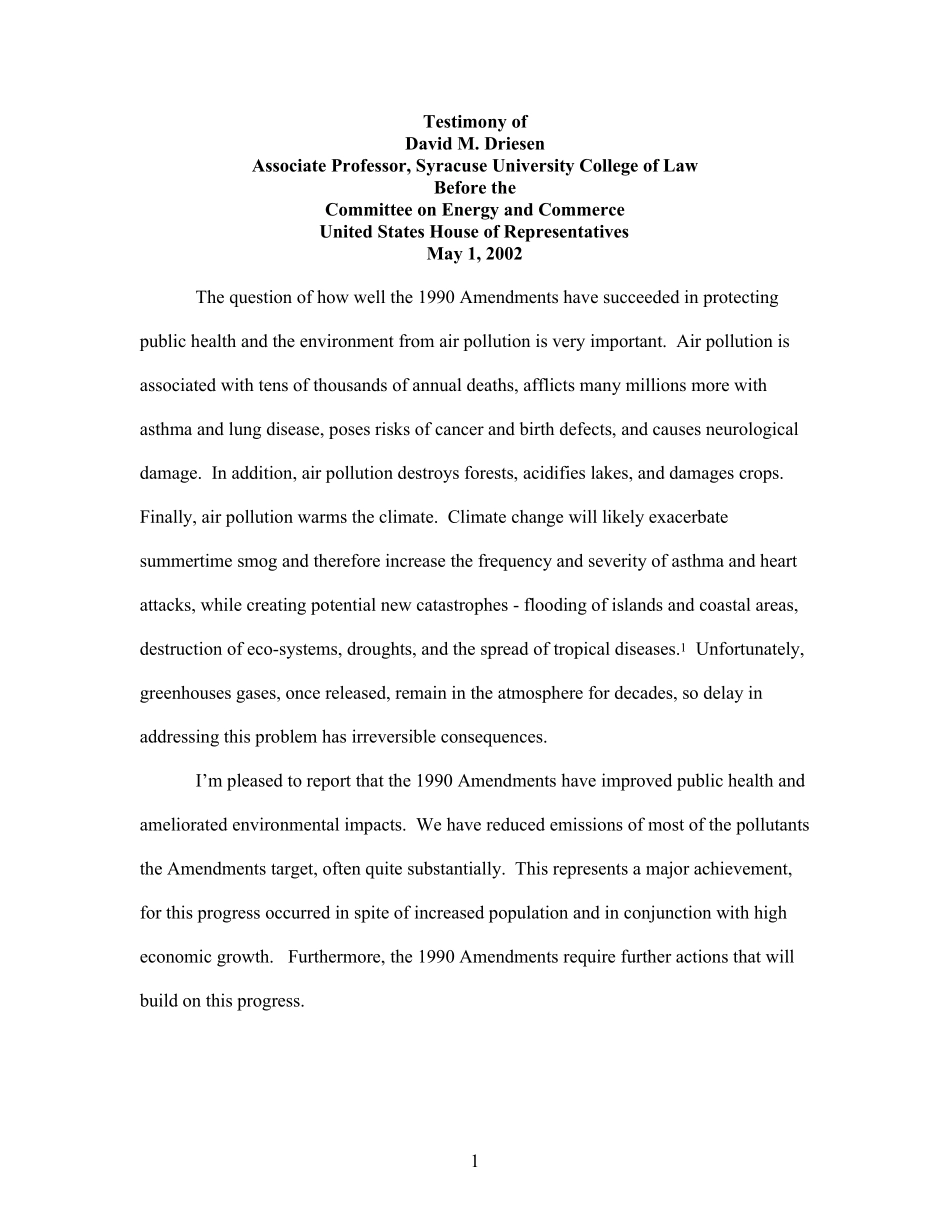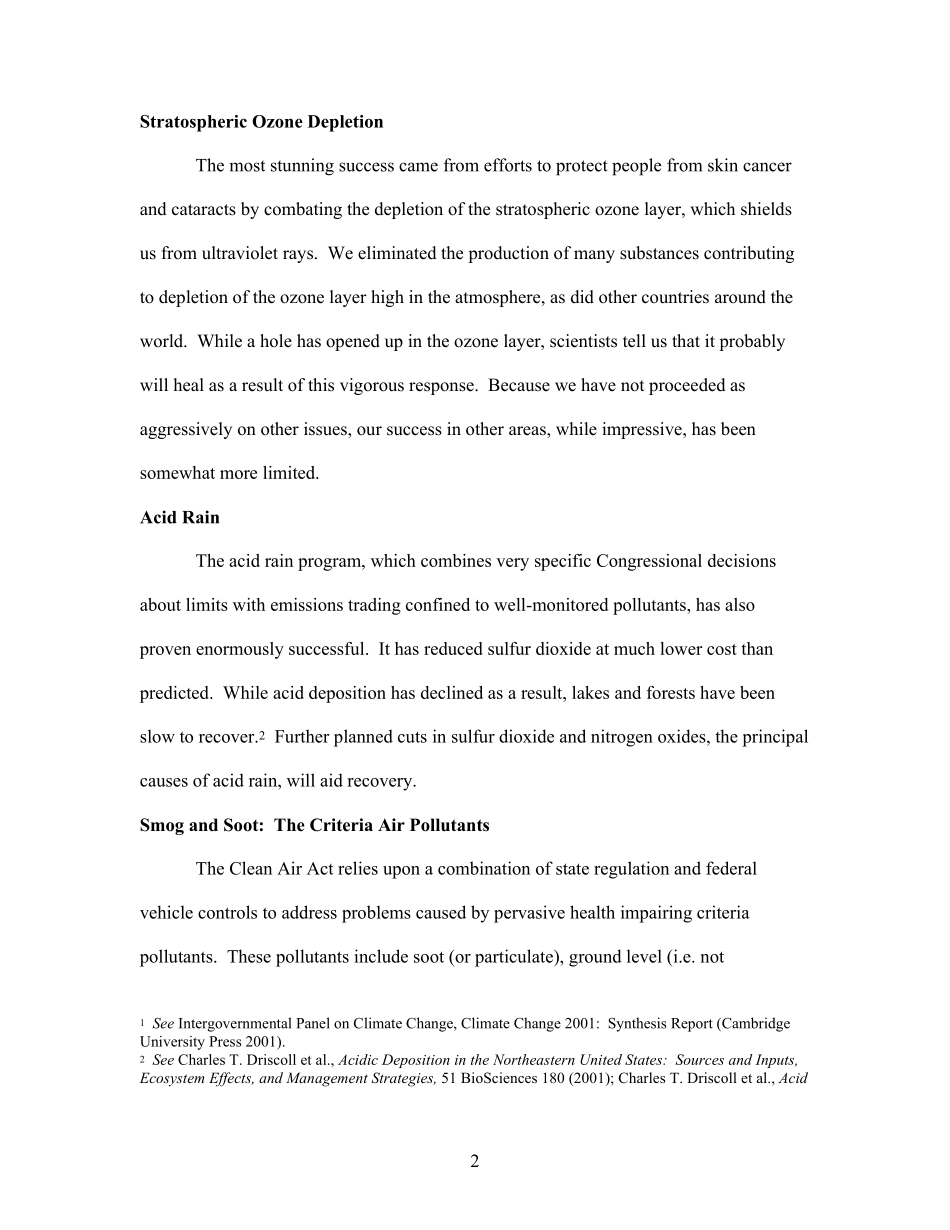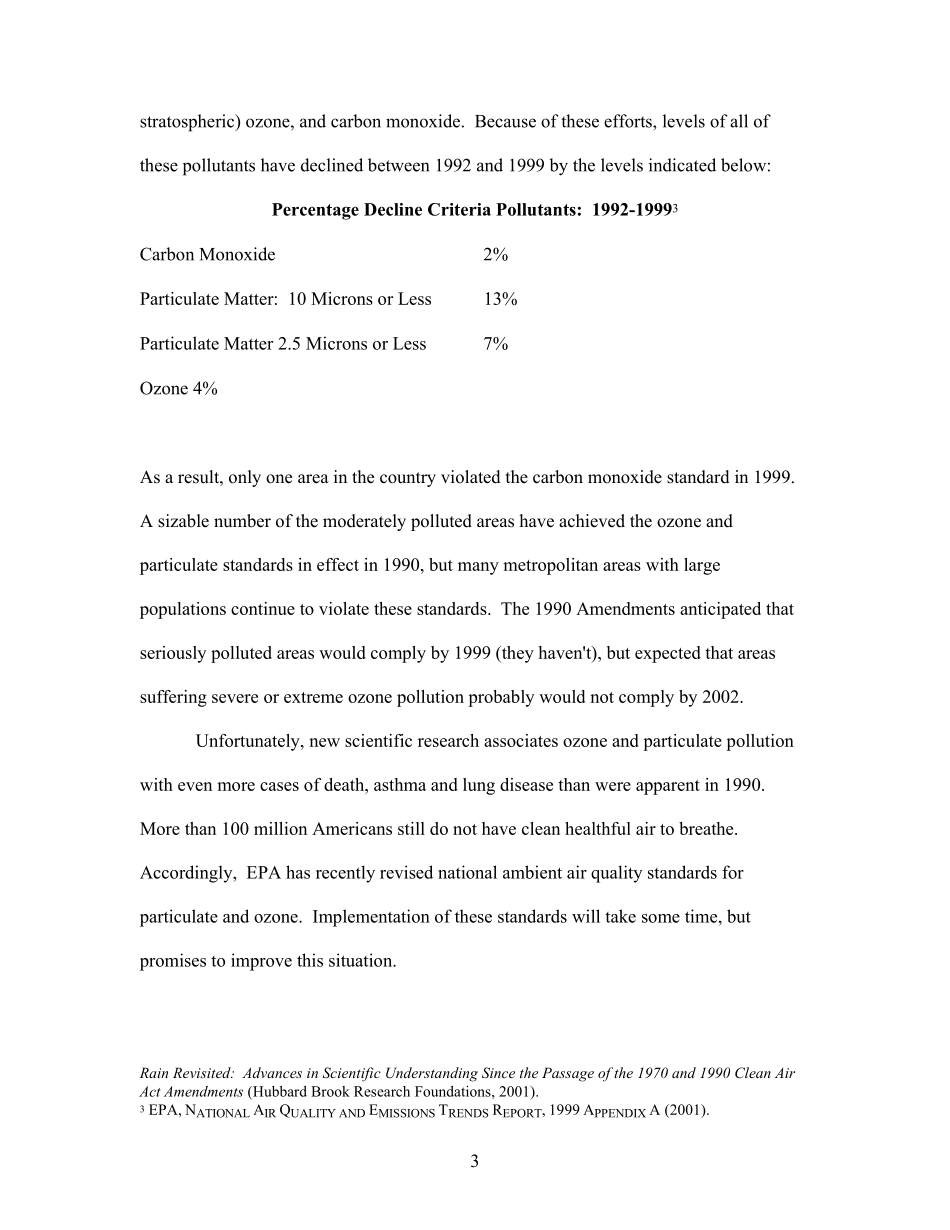1Testimony of David M. Driesen Associate Professor, Syracuse University College of Law Before the Committee on Energy and Commerce United States House of Representatives May 1, 2002 The question of how well the 1990 Amendments have succeeded in protecting public health and the environment from air pollution is very important. Air pollution is associated with tens of thousands of annual deaths, afflicts many millions more with asthma and lung disease, poses risks of cancer and birth defects, and causes neurological damage. In addition, air pollution destroys forests, acidifies lakes, and damages crops. Finally, air pollution warms the climate. Climate change will likely exacerbate summertime smog and therefore increase the frequency and severity of asthma and heart attacks, while creating potential new catastrophes - flooding of islands and coastal areas, destruction of eco-systems, droughts, and the spread of tropical diseases.1 Unfortunately, greenhouses gases, once released, remain in the atmosphere for decades, so delay in addressing this problem has irreversible consequences. I’m pleased to report that the 1990 Amendments have improved public health and ameliorated environmental impacts. We have reduced emissions of most of the pollutants the Amendments target, often quite substantially. This represents a major achievement, for this progress occurred in spite of increased population and in conjunction with high economic growth. Furthermore, the 1990 Amendments require further actions that will build on this progress. 2Stratospheric Ozone Depletion The most stunning success came from efforts to protect people from skin cancer and cataracts by combating the depletion of the stratospheric ozone layer, which shield...


